The Sony A95L is a television that made a huge impression on us. Although it has been a year since its release, it still deserves a place among the best models on the market. When it comes to picture quality, it is simply brilliant. Deep blacks, intense colors, and excellent brightness in HDR make everything look incredibly realistic. The QD-OLED panel does its job – movies and games look so good that sometimes you forget it's just a screen. Using the A95L on a daily basis is a pleasure. Google TV works smoothly, and there are plenty of apps available. The package includes two remotes: one traditional and one backlit – a really useful solution, especially in the evenings. Additionally, there is a voice assistant that makes life easier by allowing quick searches for movies or controlling the home from the couch. Gamers will also be delighted. A refresh rate of 120 Hz, low input lag (below 10 ms even in Dolby Vision), and VRR support create a set that will satisfy any gaming fan. And the sound? The Acoustic Surface Audio+ system makes sound come directly from the screen, providing excellent, spatial experiences. Of course, there are no perfect things. Two HDMI 2.1 ports (one of which is for eARC) may be a bit insufficient if someone wants to connect a console, soundbar, and other devices. In a bright room, the black may have a slightly cherry tone, which may be bothersome for more demanding users. Despite these minor comments, the Sony A95L is a piece of excellent equipment. The picture, sound, and functionality are at the highest level. It is a television that will satisfy both cinema lovers and gamers, offering true premium experiences in the comfort of home.
- Matching (Score)
- Our verdict
- TV appearance
- Where to buy
- Contrast and black detail
- HDR effect quality
- Factory color reproduction
- Color reproduction after calibration
- Smoothness of tonal transitions
- Image scaling and smoothness of tonal transitions
- Blur and motion smoothness
- Console compatibility and gaming features
- Input lag
- Compatibility with PC
- Viewing angles
- Daytime performance
- Panel details
- TV features
- Apps
- Playing files from USB
- Sound
Sony A95L vs SAMSUNG OLED S95F (QD-OLED)
Direct comparison
Check the best price offer:
SAMSUNG OLED S95F (QD-OLED)A95L
S95F / FAT / FAE

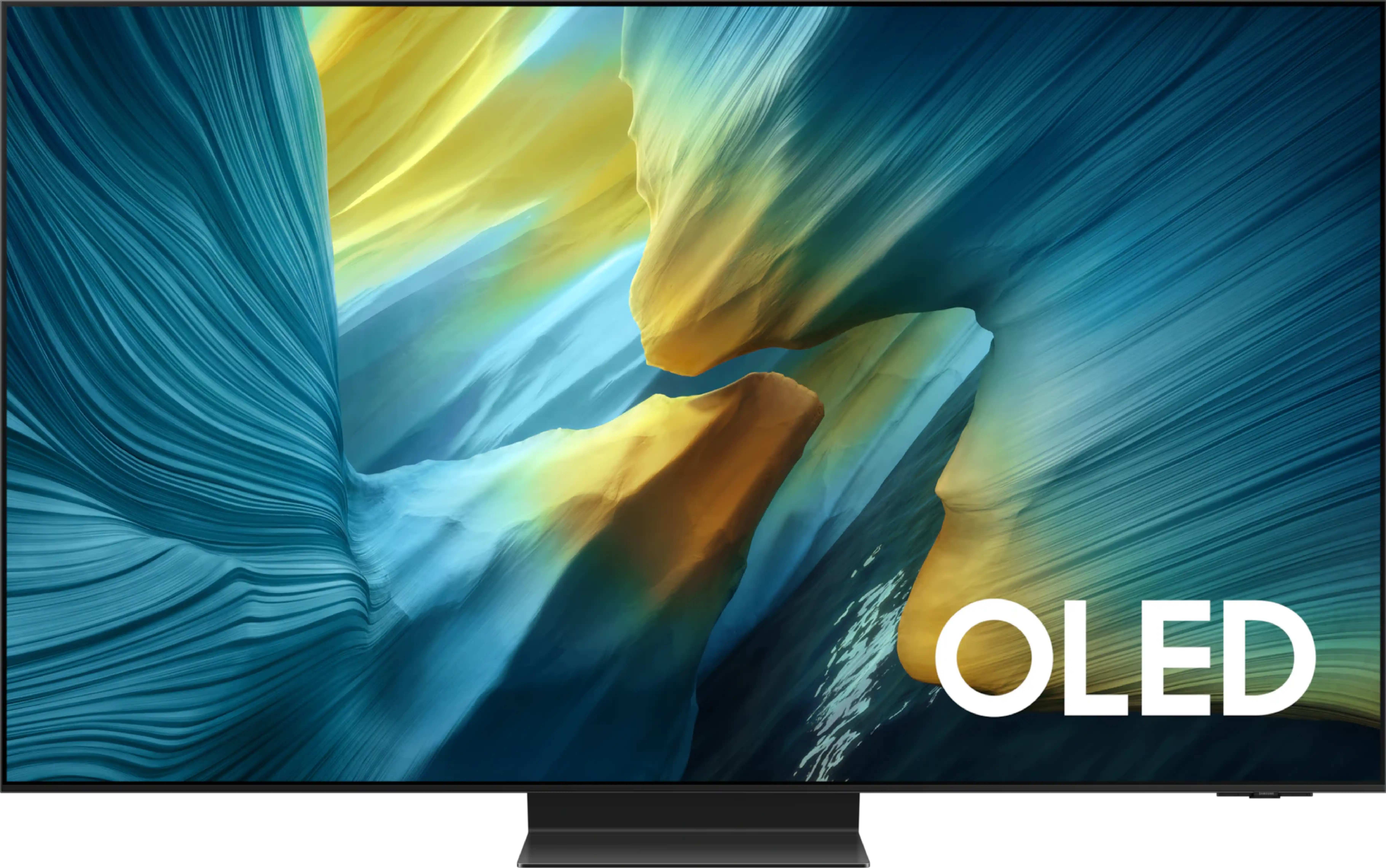
Panel type: QD-OLED
Resolution: 3840x2160
System: Google TV
Model year: 2023
Complete the survey to find out the result

Panel type: QD-OLED
Resolution: 3840x2160
System: Tizen
Model year: 2025
Complete the survey to find out the result

Overall rating
8.3
8.7
Movies and series in UHD quality
9.0
9.3
Classic TV, YouTube
9.3
9.3
Sports broadcasts (TV and apps)
9.0
8.9
Gaming on console
9.3
9.9
TV as a computer monitor
5.0
8.8
Watching in bright light
5.4
7.1
Utility functions
8.8
7.9
Apps
9.6
8.7
Sound quality
7.9
8.0
Complete the survey to find out what fits your preferences
Advantages
Amazing Contrast
Great for HDR movies
Advanced Google TV system
Great Viewing Angles
Gaming Features: ALLM support, VRR, 120 Hz refresh rate, low input lag
Great sound
Camera included
Perfect black and excellent contrast
High brightness of the image
Outstanding image quality after calibration
Ultra-fast QD-OLED panel 165 Hz
Best choice for gamers – full support for HDMI 2.1, VRR, ALLM, and HGiG, input lag of just 5 ms (highest rating on the portal!)
Best reflection suppression thanks to the matte screen finish
Wide viewing angles without loss of quality – top level thanks to the QD-OLED panel
Intuitive and fast Tizen operating system with a rich set of features
Modern and elegant design
One Connect module for easy aesthetic cable management
Disadvantages
Only Two HDMI 2.1 Ports: One of the HDMI 2.1 ports is used for eARC, which may limit the number of devices that can be connected, especially for those using a soundbar and a console
Cherry black effect in bright light: The QD-OLED panel causes blacks to lose their depth in strong light
Not the sleekest design
Price compared to competitors
No support for DTS:X (home theater)
No USB recording from built-in tuners
Cherry black effect in very challenging lighting conditions
Our verdict
The Samsung S95F is an excellent continuation and an improvement over last year's S95D model. Thanks to the QD-OLED panel, we get an image that delights from the first minutes of the viewing experience. The blacks are deep and natural, without signs of backlighting, and the brightness of the next-generation panel reaches levels that just recently seemed out of reach for OLEDs. These values are so high that the S95F can confidently be compared to the best Mini-LED screens - both in terms of HDR effect and in everyday use in bright daylight. After a slight adjustment of the settings, the television can offer a reference image that creates a cohesive and cinematic experience. However, it is not only a screen for movie lovers but also one of the absolute favorites for gamers. The 165 Hz panel with instant response, an input lag of just a few milliseconds, a full suite of gaming features – including VRR, ALLM, and excellently implemented HGiG – as well as four HDMI 2.1 ports make the S95F effortlessly meet the requirements of both next-generation console owners and PC gamers. It is a complete set of capabilities that makes the S95F one of the best gaming TVs on the market. Samsung has also taken care of user details. The matte screen finish effectively eliminates reflections, ensuring that even in a bright living room, the image remains clear and comfortable. The One Connect module organizes the cabling, moving all the connections to a separate box, which will be appreciated by anyone who likes to regularly juggle connected devices. The design of the television is slim, elegant, and thoughtful – it is clear that this is a Super Premium class product that looks great in any interior. Of course, like any device, the S95F has its minor compromises, but at this class and completeness, it is easy to forget about them.
This is a television that combines the best image quality with functionality and user comfort. Without a doubt, it stands up to the strongest competition, and it can be confidently considered as one of the main contenders for the title of TV of the Year 2025.
TV appearance




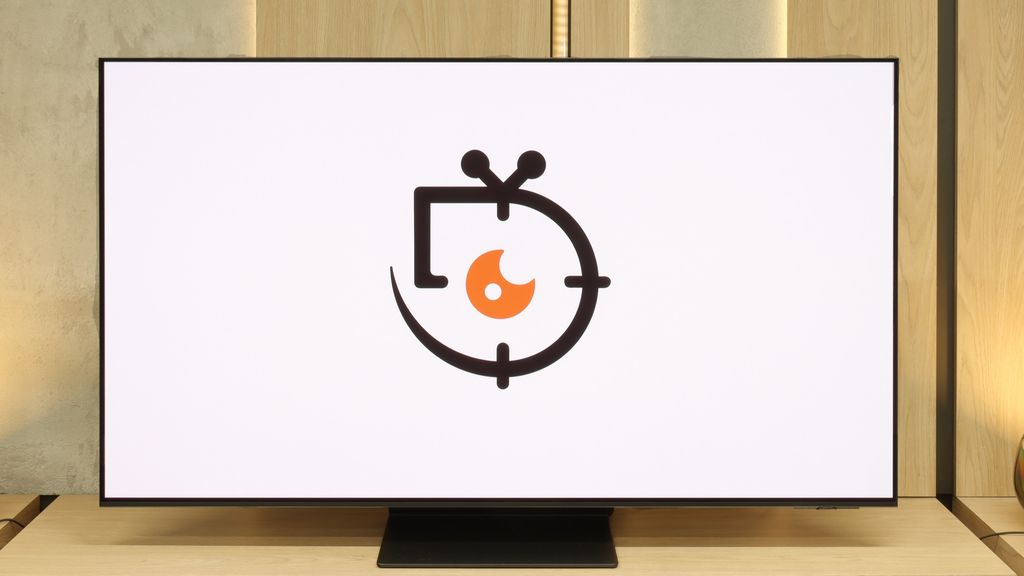
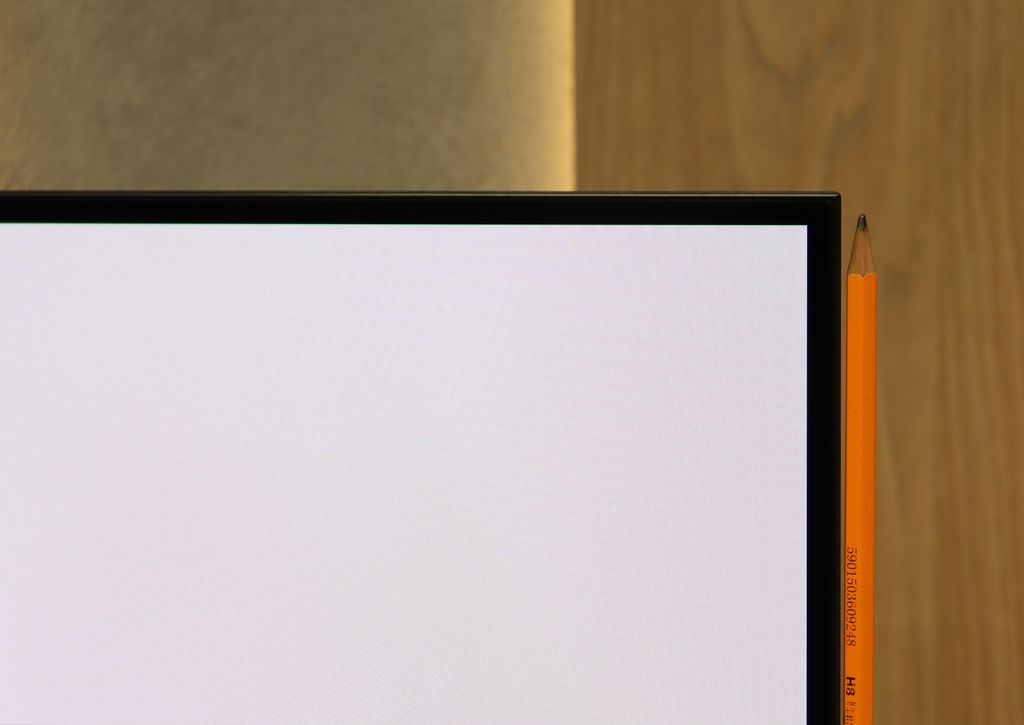
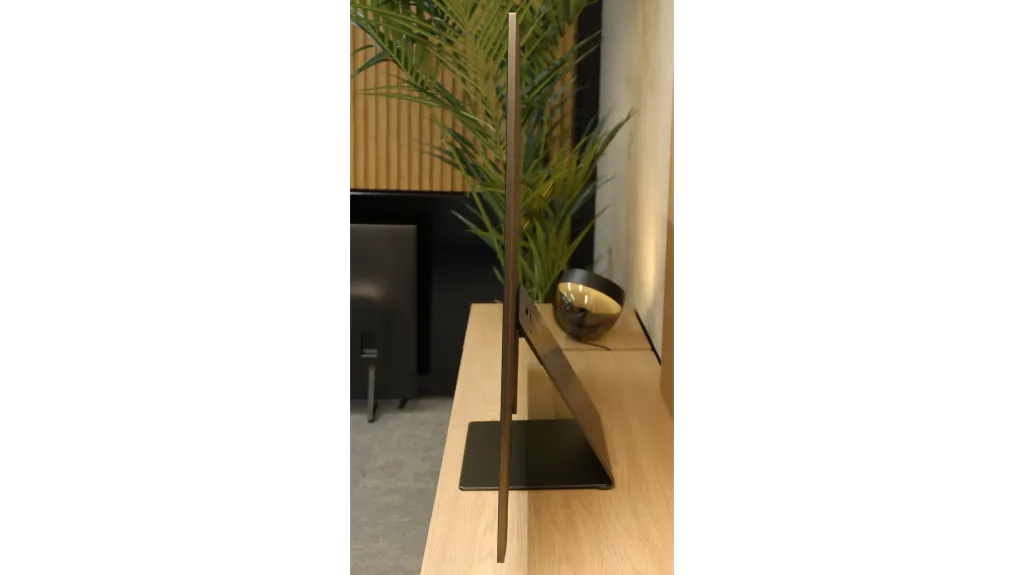
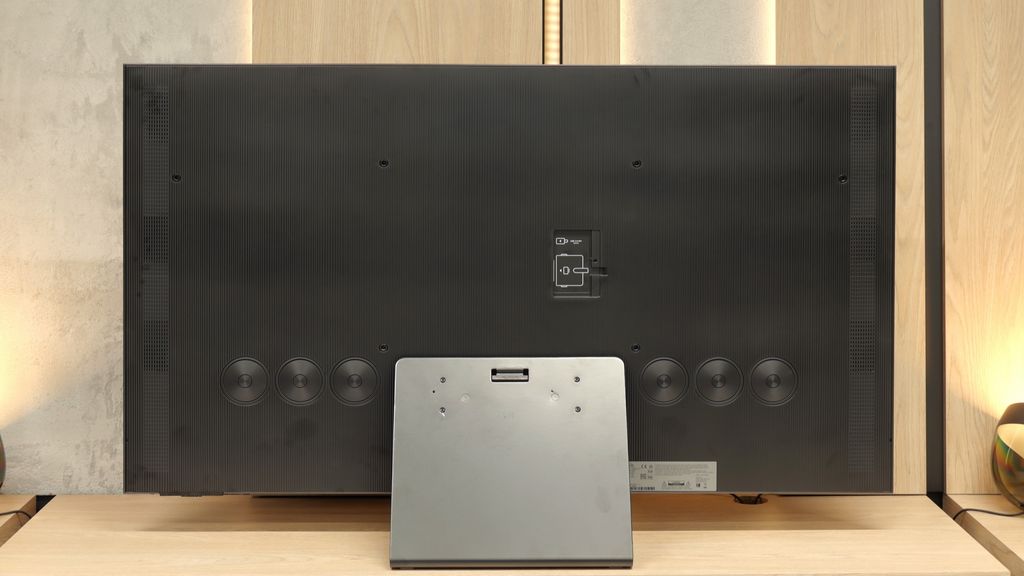
Contrast and black detail
10/10
10/10
Contrast:

Result
∞:1

Result
∞:1

Result
∞:1

Result
∞:1

Result
∞:1

Result
∞:1

Result
∞:1

Result
∞:1

Result
∞:1

Result
∞:1
Halo effect and black detail visibility:

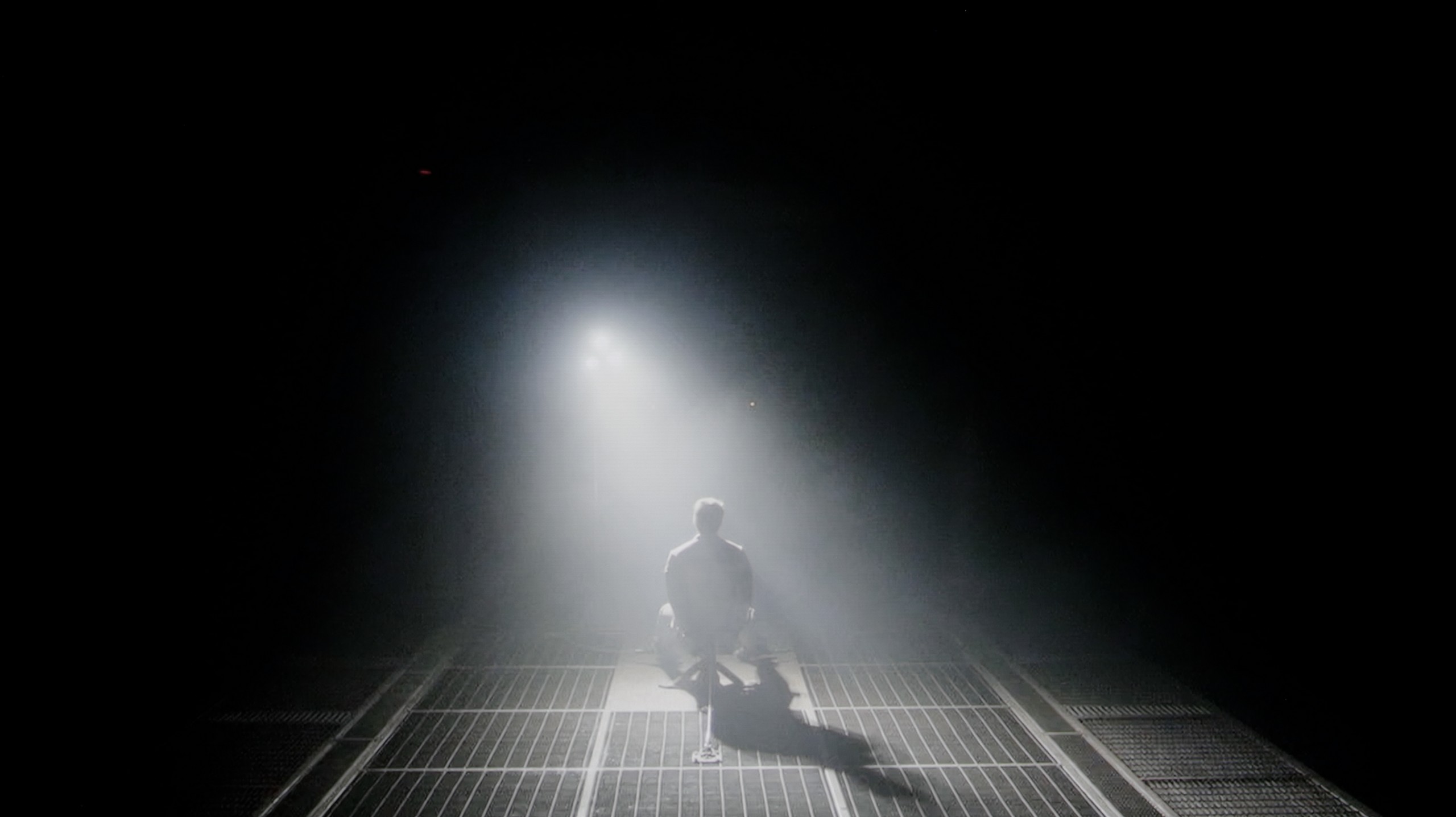
Sony A95L is an OLED television that truly impresses when it comes to contrast. Thanks to OLED technology, this model offers perfectly deep blacks – in dark scenes, there are no discolorations or glow, which makes the images look incredibly realistic. Additionally, QD-OLED technology allows for achieving higher brightness, which further emphasizes the difference between light and dark elements. As a result, in scenes like those from the movies Oblivion or Sicario 2, A95L Sony effectively separates lights from shadows, enhancing the clarity and depth of the image – an ideal solution for those seeking cinematic experiences at home.
The Samsung S95F with a QD-OLED panel demonstrates that when it comes to black levels and contrast, it's hard to find something better. Even the first test scenes prove that this television can dim the picture to absolute black while flawlessly representing even the smallest points of light. The effect is stunning – a sky full of stars looks like it's been transported directly from an observatory, and the cinematic darkness takes on depth and drama. Details in the shadows are preserved with reference-grade accuracy, which makes the experience of watching movies at home gain a new dimension.
HDR effect quality
7.8/10
8.7/10
Luminance measurements in HDR:

Result
1471 nit

Result
1498 nit

Result
1465 nit

Result
1527 nit

Result
626 nit

Result
2044 nit

Result
2159 nit

Result
2167 nit

Result
2180 nit

Result
1427 nit
Scene from the movie “Pan” (about 2800 nits)


Scene from the movie “Billy Lynn” (about 1100 nits)


Static HDR10


Dynamic: Dolby Vision
Dynamic: HDR10+


HDR luminance chart:
SAMSUNG OLED S95F (QD-OLED)
HDR luminance
Sony A95L
HDR luminance
Sony A95L offers an incredible HDR effect, achieving an impressive brightness level of 1500 nits in scenes such as those from Life of Pi or Sicario 2. These results are truly remarkable – the bright elements in these films practically come to life on the screen, providing the viewer with immersive visual experiences. The only thing to note is minor issues with maintaining brightness in the scene from The Meg, where the entire scene is flooded with light. However, this is a natural effect related to OLED technology. The wide coverage of the BT.2020 color palette at 89% is also a significant advantage, placing A95L Sony among the top TVs in terms of color reproduction. All of this is made possible by the QD-OLED panel from Samsung Displays.
The new generation of QD-OLED panels in the Samsung S95F shows its full potential, and the brightness results are absolutely stunning. In test film scenes, such as "Life of Pi" or "Sicario 2," where smaller light elements appear – stars, the moon, or headlights – the TV was able to achieve over 2000 nits of brightness. This is a result that surpasses even most top Mini-LED models.
The secret lies in the technology itself – instead of a limited number of dimming zones like in Mini-LED TVs, we have millions of glowing pixels here, allowing the TV to fully showcase its power without technological compromises. Of course, since it is still an organic panel, in full-screen scenes flooded with white – like in the final sequence of the film The Meg – the brightness drops to around 1400 nits. Nevertheless, the result remains excellent and definitely exceeds what any OLEDs, both QD-OLED and WOLED, have offered so far. The color reproduction also deserves special attention. Thanks to QD-OLED technology, the TV achieves almost 100% coverage of the DCI-P3 color palette and about 80% in BT.2020. These values make the HDR image not only dazzling with brightness but also captivating with a richness of colors.
Factory color reproduction
7.9/10
6/10


Factory Mode
After calibration


Factory Mode
After calibration
The best factory mode in terms of color reproduction in Sony A95L is IMAX Enhanced. This is a mode that, at first glance, seems to be well calibrated; however, upon closer examination, several areas requiring improvement can be noticed. First and foremost, the white balance for both SDR and 4K HDR content is skewed with excessive blue and red color, leading to a subtle pink tint, particularly noticeable on neutral tones. As a result, skin tones are inaccurate, affecting the realism of the displayed image. This is clearly visible in the comparison photo below. Additionally, the Colour Checker test confirms the presence of these errors—color samples often deviate from their reference values, indicating some inaccuracies in the factory color reproduction of A95L Sony. The maximum deltaE error values reach up to 5.8, which is a clear indication that colors are not always reproduced as precisely as they should be.
Regarding brightness characteristics, the gamma for HD/SDR content is generally quite correct, maintaining an appropriate balance between brightness and contrast. Unfortunately, there is a significant jump at the end of the graph, leading to a strong brightening of the image when the screen is fully flooded with white. This can make scenes with very bright backgrounds, such as snowy landscapes or intense daylight, appear overly vivid and lose detail. In the case of HDR content, the EOTF curve, which is responsible for controlling luminance, is slightly boosted compared to the reference values. This, in turn, causes the image to be somewhat brighter than it should be, which may affect the perception of more subtle details in the darker areas of the frame.
The best picture mode right out of the box is undoubtedly Filmmaker Mode – a mode that Samsung has been using for several years, designed to faithfully represent the creators' intentions. In SDR content, its implementation is not bad, although some imperfections can be noticed. The picture is slightly dimmed, and the screen has a slight pinkish tint resulting from the predominance of red and blue in the white balance. Color errors remained at a level of 3–4 ΔE units – and for the uninitiated: a value above 3 is the threshold where the average human eye begins to notice differences.
However, much larger problems arise in HDR content. Here, the white balance was not such a significant issue – a slight excess of blue did not cause major problems. The issue became managing brightness. In practice, the TV "overexposed" the image too much, causing details in the blacks to completely disappear. The final effect was far from what was expected, and the color errors in this mode became really large. It's hard to say why such a design decision was made, but it was clear that the factory HDR settings did not allow this TV to showcase its full potential.
Color reproduction after calibration
9.3/10
9.4/10




Sony A95L offers excellent tools for professional screen calibration, allowing you to maximize the capabilities of the IMAX Enhanced mode. We used them to bring the image to a level that will satisfy even the most demanding viewers. After calibration, the white balance for both 4K HDR and SDR content looks simply great – almost perfect. The Colour Checker test confirmed that deltaE errors do not exceed a value of "2", which means that color reproduction is extremely accurate, and any deviations are practically imperceptible to the human eye.
Calibration also brought a significant improvement in terms of brightness – gamma is now perfectly balanced, eliminating the previous issue of excessively brightening scenes with very bright backgrounds. As a result, even the most vibrant moments, such as snowy landscapes or intense daytime scenes, appear natural, without the effect of clipping. The EOTF curve, which is responsible for controlling luminance in HDR content, has also been improved – it now reaches a reference level, both in synthetic tests and in practical movie watching.
As a result of the calibration, A95L Sony offers excellent experiences, whether you're watching material from regular television or your favorite movies. Every detail is reproduced exactly as the creators intended – without unnecessary brightening, with perfectly rendered colors and appropriate depth. This shows that this television, after professional tuning, is capable of competing with the best screens on the market, offering an image that truly impresses.
After calibrating, it was possible to make subtle adjustments in white balance and significantly improve the image characteristics. In SDR content, the quality has become practically reference-level—most color errors have fallen below a ΔE value of 1, which is the level at which the human eye can no longer detect differences. This is a result that places the S95F among the absolute top televisions available on the market.
In HDR materials, calibration also brought significant improvement. The tendency of the television to overexpose the image was successfully controlled, as confirmed by the analysis of the EOTF curve. A slight tendency to brighten the entire scene or occasional loss of details in the blacks can still be observed; however, it does not significantly impact the overall perception. After calibration, the S95F showcases its full potential and can be described as one of the best televisions on the market!
Smoothness of tonal transitions
9/10
8.9/10












The fluidity of tonal transitions in A95L is truly remarkable – it is one of the greatest advantages of QD-OLED panels. The image appears extremely smooth, and all transitions between different shades are perfectly rendered, without noticeable jumps or distortions. As of today, it is hard to find a panel that better handles such precision in reproducing tonal transitions. Of course, if someone really looks closely, small errors can be seen in the areas of black, but they are subtle enough that hardly anyone will notice them during normal use of the Sony A95L. For most users, these minor imperfections will be completely unnoticeable, and the fluidity and detail of the tonal transitions will satisfy even the most demanding enthusiasts of excellent image quality.
The Samsung S95F with QD-OLED panel handles tonal transitions really well. It's hard to find any serious issues here – the color gradation is smooth, and the image looks natural. Only in very dark scenes and shades close to black can you notice slight imperfections, but they don't matter much in everyday viewing. The overall impression is that the smoothness of the transitions is at a very high level and does not distract the viewer's attention.
Image scaling and smoothness of tonal transitions
8/10
7.5/10
Smooth transition function

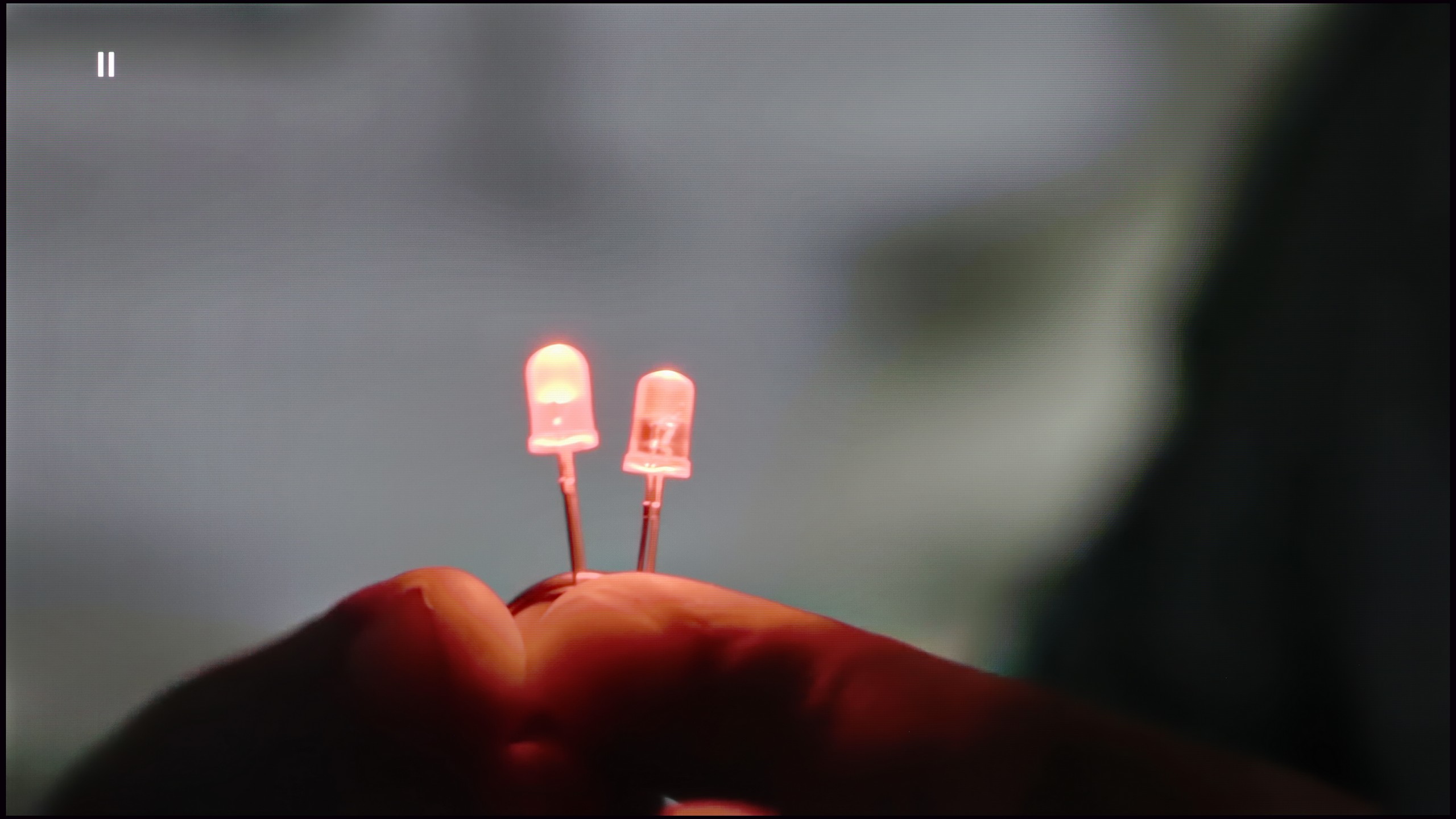
Image without overscan on the SD signal


The tonal transition smoothing function in Sony A95L works really well and is worth noting. We recommend setting it to the "Medium" level because at this value, you achieve an ideal compromise – there are no artifacts, and the image looks extremely natural and pleasant to the eye. This allows for smooth transitions between different shades while maintaining scene detail, which further enhances viewing comfort.
As for upscaling, you can see the full power of the XR processor here. Sony A95L handled our test material featuring a model excellently – the image is exceptionally clear, there are no excessive jagged edges, and the details in the background are perfectly preserved. The XR processor effectively improves low resolution, providing very good results that allow you to enjoy content in almost high quality, even if its source is not ideal.
The Samsung S95F offers a noise reduction feature that smooths tonal transitions. It works very effectively, but in practice, it can be too aggressive. Materials of lower quality – such as older recordings or videos from YouTube – become soft and plastic when this feature is turned on, resembling an image digitally smoothed in a graphics program. Unfortunately, this also causes the natural film grain, which often adds authenticity to the image, to disappear. Fortunately, the TV does not lose too many fine details, such as in skin textures or elements of the surroundings. Therefore, this feature is best used with caution – depending on preferences, one can achieve a smooth image, but less natural, or one that is more faithful to the original. In our opinion, the most universal choice is the “Standard” setting.
The image scaling performs significantly better. The TV handles lower resolution materials well – even 576p content looks quite decent, although a slight blockiness can be noticed. Overall, the effect is very good, although it is somewhat inferior to what Sony Bravia 8 (II) or LG G5 can achieve. It's also worth mentioning a small imperfection of the S95F – in older materials, overscan may occur, causing a slight cropping of the left edge of the image.
Blur and motion smoothness
8.5/10
8.5/10

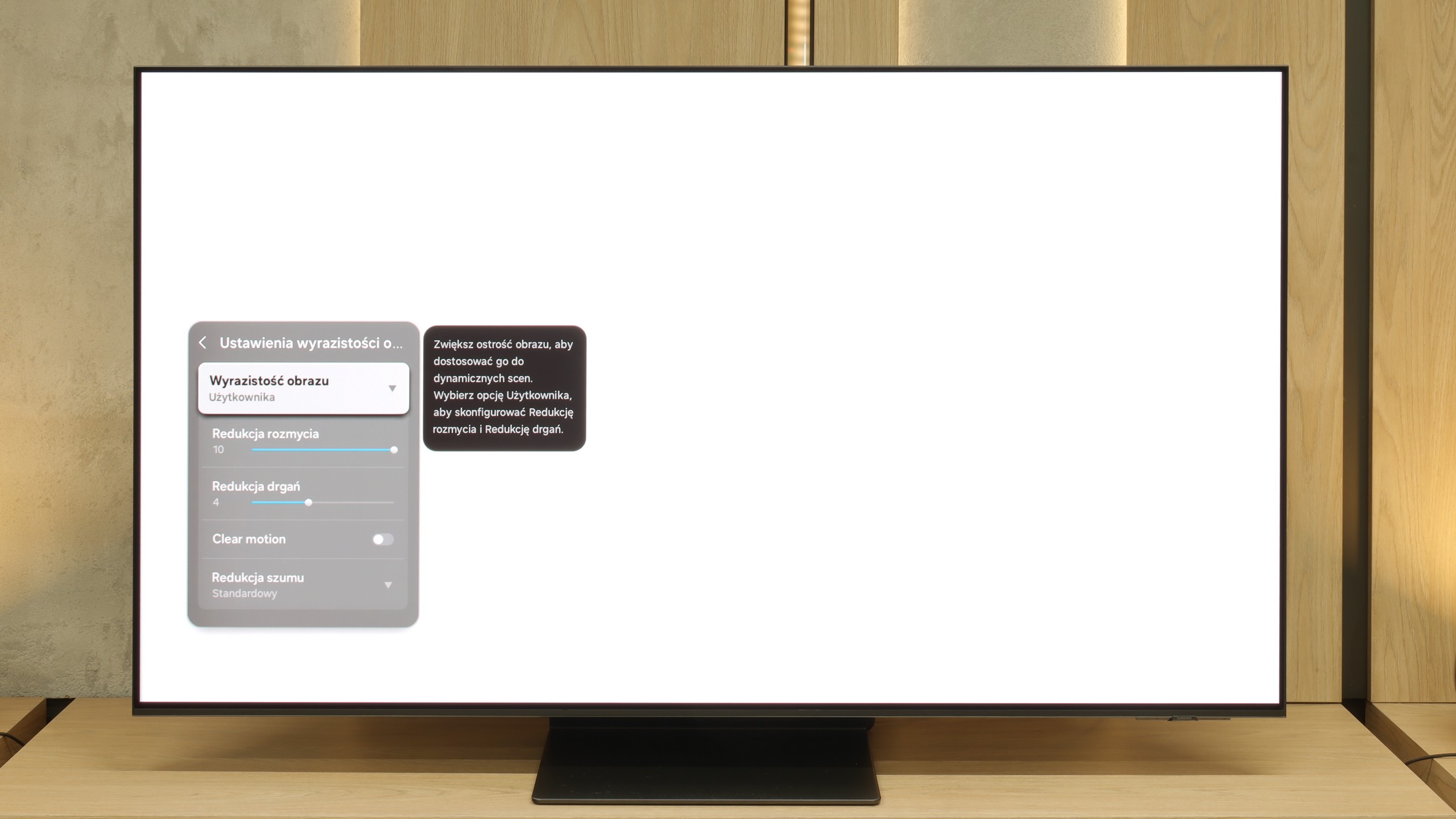
Blur (native resolution, maximum refresh rate):






Blur (BFI function enabled):



Image flickers in this mode



Blur ():
Blur (4K@165Hz):



Sony A95L is a TV that should satisfy both gamers and movie lovers. When it comes to watching movies, this model is equipped with Motionflow technology, which allows precise adjustment of whether we want the image to be more "framey," like in traditional cinema, or exceptionally smooth, like in cinema TVs. The "Smoothness" slider allows you to regulate the level of smoothness – from subtle changes to a more noticeable effect, while the "Clearness" slider is responsible for reducing flicker and artifacts, helping to achieve more natural and clearer motion. Regarding gaming and watching sports, the A95L Sony television offers a refresh rate of 120 Hz, making every dynamic action look incredibly smooth. Gamers will appreciate the lack of blur, while sports fans will see every movement in full sharpness. Overall, the TV performs great – both with fast-paced gaming and emotionally charged movie sequences.
The Samsung S95F demonstrates phenomenal motion fluidity. The panel itself operates at a native 4K resolution with a refresh rate of up to 165 Hz, and combined with QD-OLED organic technology, it delivers incredible results. Sports and games look amazing – the image is fast, dynamic, and very natural. Additionally, the built-in motion smoother and motion blur reduction system allow you to adjust the character of the image to your preferences. You can opt for a more "frame" effect with visible film structure or a smooth, theatrical performance. Every viewer will find a setting that suits them.
Console compatibility and gaming features
9.4/10
9.6/10
- ALLM
- VRR
- VRR range48 - 120Hz48 - 165Hz
- Dolby Vision Game Mode
- Correct implementation of HGIG
- 1080p@120Hz
- 1440p@120Hz
- 4K@120Hz
- Game bar

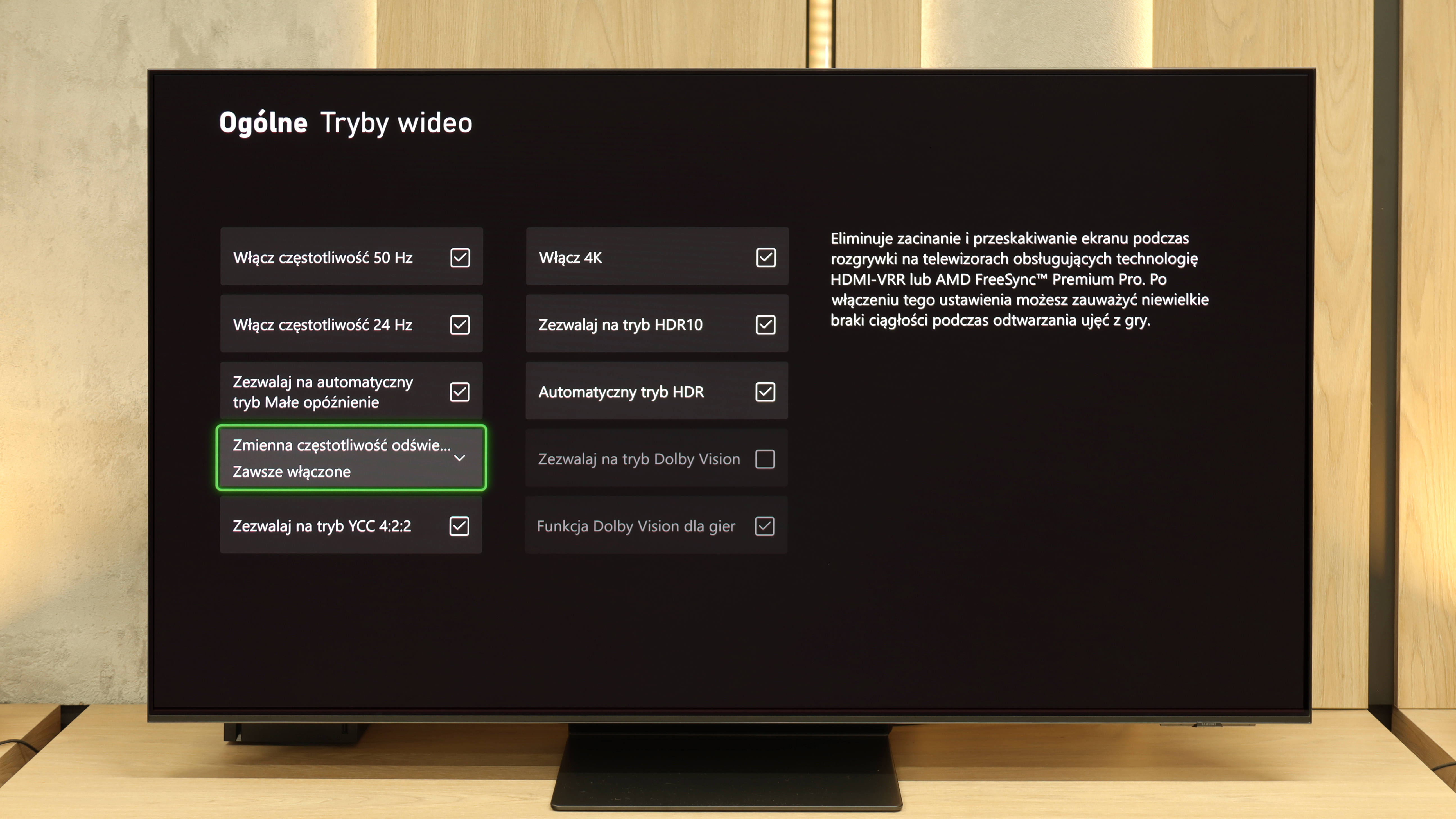

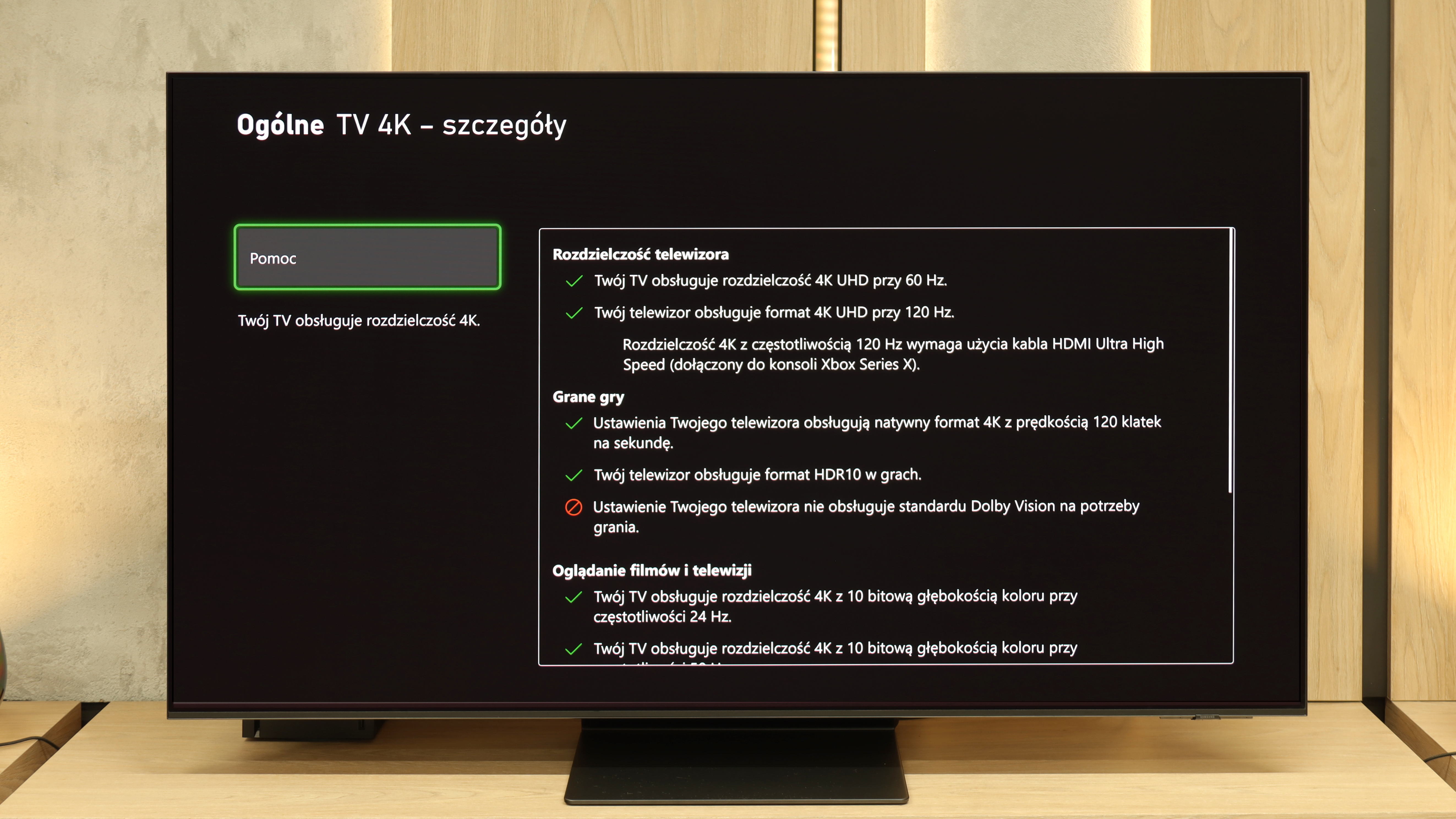

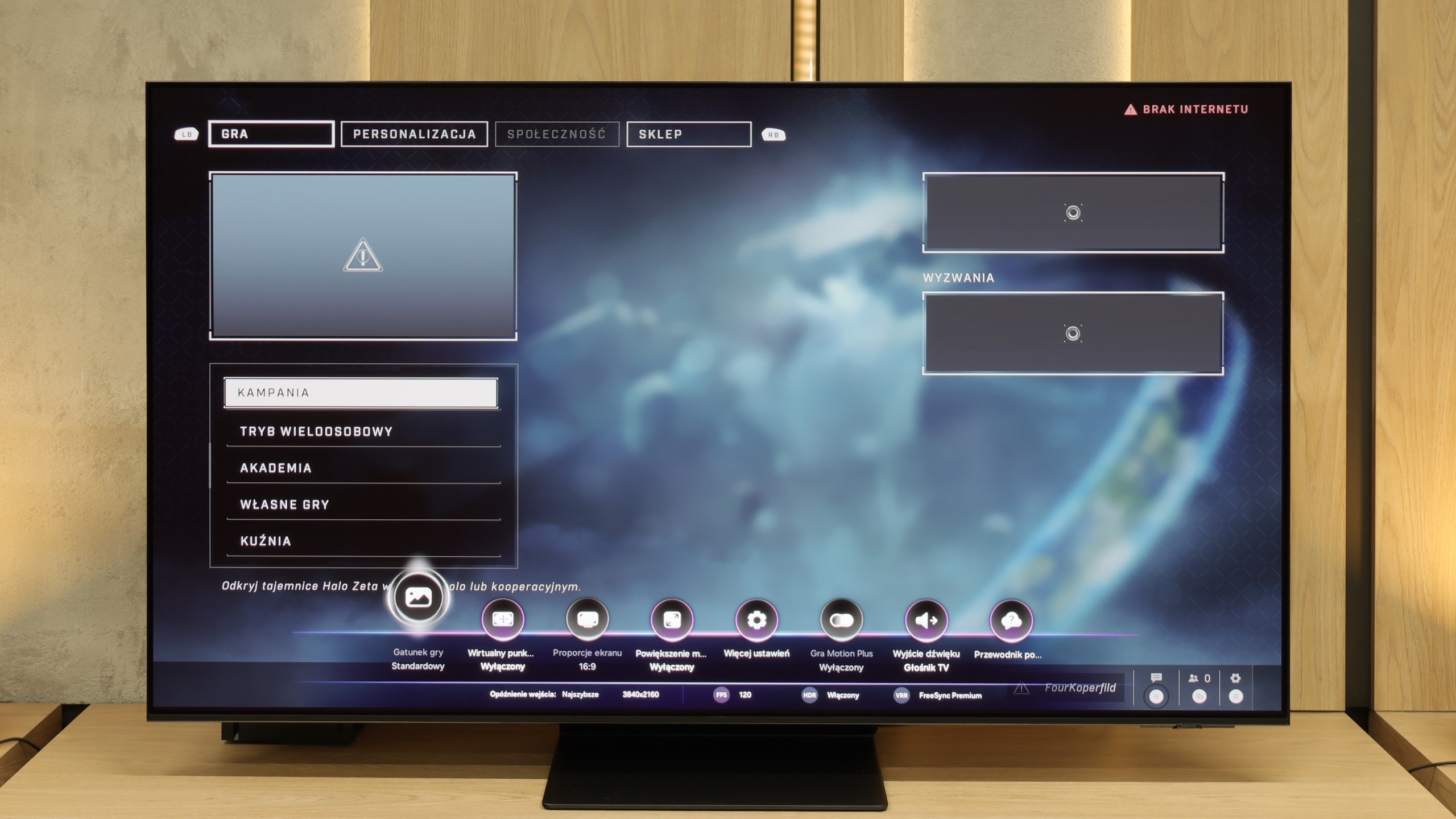

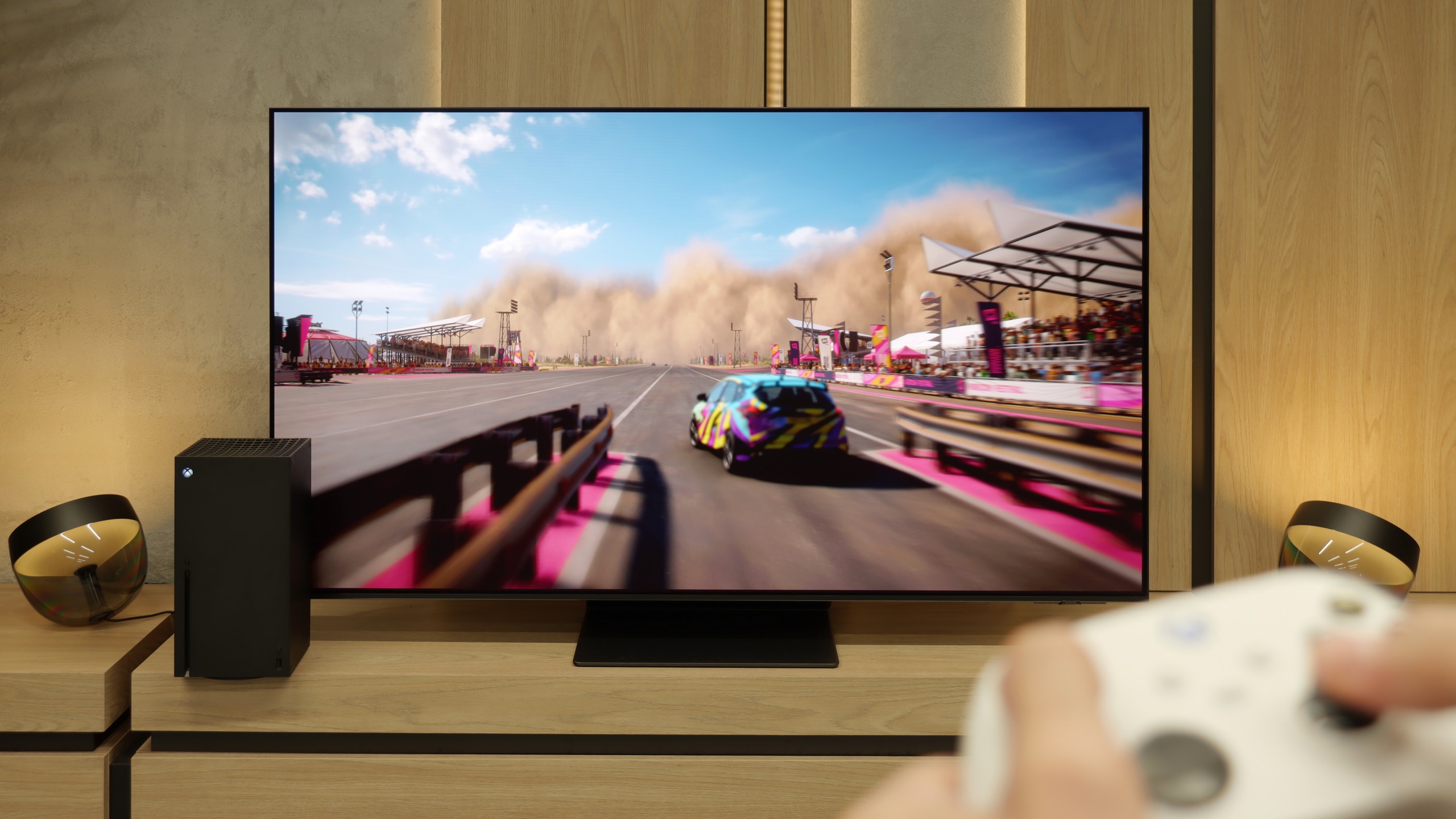
Sony A95L is a television that will truly satisfy gamers, thanks to several key features that set it apart from the competition. First of all, a 120 Hz refresh rate – this is something that anyone who loves fast action games, racing, or dynamic shooters will appreciate. This ensures exceptionally smooth visuals, making gameplay more satisfying without annoying stutters. The A95L Sony also has an ALLM (Auto Low Latency Mode) feature that automatically activates low latency mode when we start up a console. What does this mean? Above all, faster on-screen responses, which is invaluable in games where every second counts. Additionally, there’s VRR (Variable Refresh Rate), which adjusts the refresh rate to match the frame rate generated by the console. The result? No tearing, and everything looks smooth and consistent – even with fluctuating FPS.
It’s worth mentioning the support for Dolby Vision with low input lag in games – something we don’t often encounter in televisions, yet it’s included here. This makes the visuals in HDR-enabled games incredibly vibrant, with rich colors and excellent contrast. Both the brightest and the darkest details are visible, making everything look just as the game developers intended. And let’s not forget the "Game Bar" – a small but very practical feature. It gives us quick access to all the important gaming settings, such as VRR and latency information. There’s no need to interrupt gameplay to adjust settings – everything is at hand.
However, it is important to remember that the A95L offers only two HDMI 2.1 ports with full bandwidth, one of which is designated for eARC. This may pose a limitation if we plan to connect multiple devices – for example, a next-gen console and a soundbar simultaneously. In such cases, the eARC occupying one of those ports may be somewhat troublesome, blocking the ability to connect a second console.
The same advantages of low motion blur and excellent motion fluidity characteristic of OLED panels are just the beginning, as the Samsung S95F was designed with gamers in mind. The manufacturer has equipped it with four HDMI 2.1 ports – although limited to a bandwidth of 40 Gb/s, in practice, this has no impact on compatibility with consoles or PCs. We get a complete set of gaming features: variable refresh rate (VRR), automatic game mode (ALLM), as well as a very well-implemented HGiG standard, which allows HDR titles to appear as their creators intended. The whole thing is complemented by the Game Bar – a clear settings hub where we can preview and change all key picture parameters with one movement. The proprietary motion smoother Game Motion Plus also deserves praise, as it can smooth out animation, which is particularly useful in productions running at 60 frames, where stability is not always exemplary. Although support for Dolby Vision in games is lacking, it is hard to consider this a serious drawback – Samsung compensates for it with other solutions. This is one of the best, if not the best, gaming TVs available today on the market.
Input lag
9.8/10
10/10
SDR
HDR
Dolby Vision
When it comes to input lag, Sony A95L really delivers. Even in Dolby Vision mode, the lag is surprisingly low – results below 10 ms with 120 Hz content are something that makes a huge impression. With such low input lag, gaming is incredibly responsive, and every action in the game is immediately reflected on the screen. For those playing at 60 frames per second, an input lag of 17 ms is also very good. It's a value that practically does not affect the gaming experience – it falls within the so-called "placebo effect." Sony deserves praise for the update to the Dolby Vision Game mode, which resolved the high input lag issue present at the TV's launch in 2023.
The input lag in the S95F is at a level where it's hard to even talk about delay. 5 ms with 120 Hz content means there’s no room for hesitation between pressing the button and the response on the screen. It’s pure immediacy. And if someone is concerned about the 60 Hz mode – no worries, there we’re talking about 10 ms, which is still a value that places the television among the absolute top and doesn’t give any reason for complaints.
Compatibility with PC
5/10
8.8/10

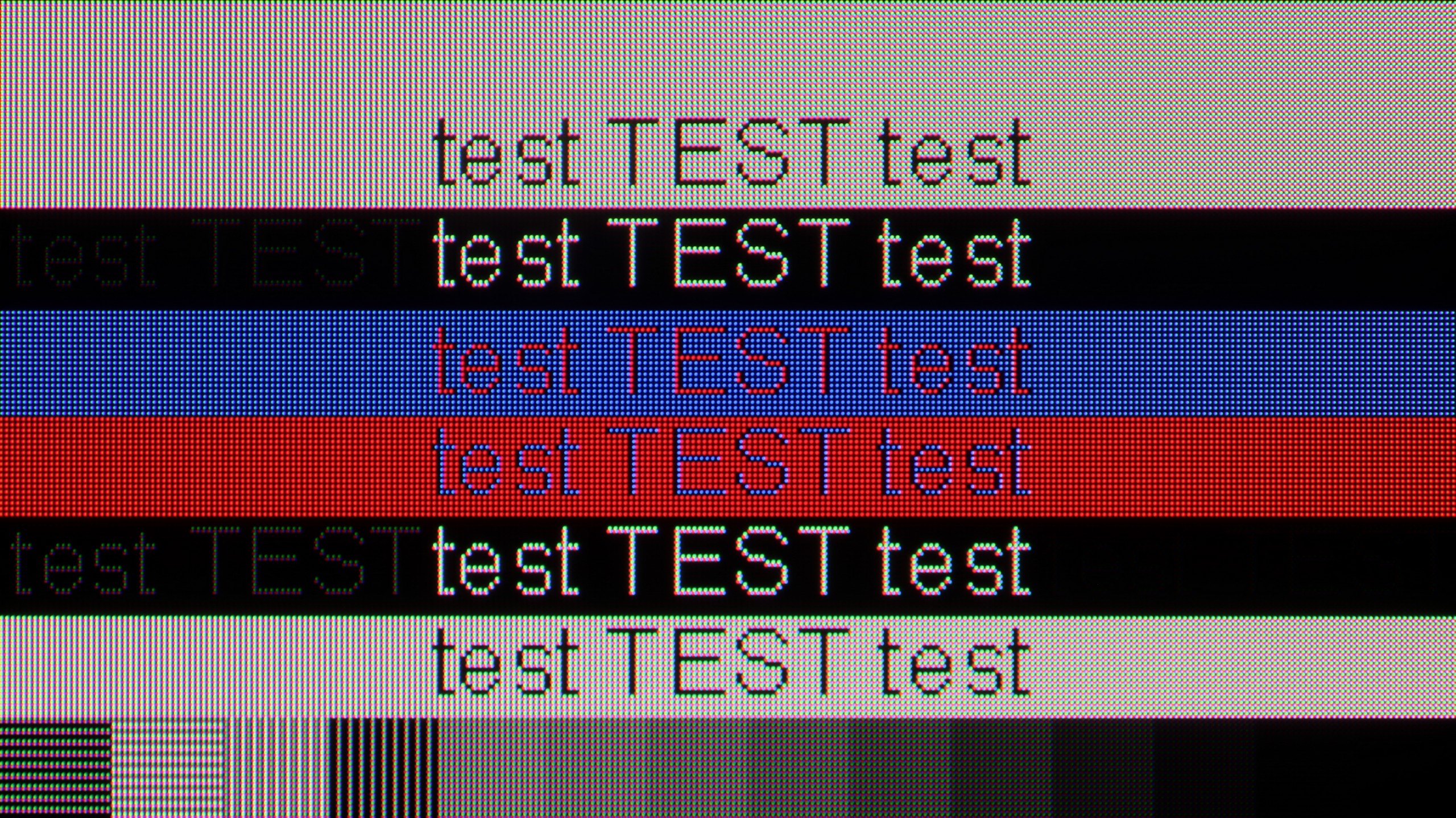
Sony A95L TV offers compatibility with a computer at 4K resolution both at 60 Hz and 120 Hz. In 4K mode at 60 Hz, the readability of fonts is at a good level, making it comfortable to use the TV as a monitor for office work or browsing content.
Unfortunately, when switched to 4K with a refresh rate of 120 Hz, the quality of the displayed text deteriorates – the resolution is reduced by 2 times, negatively affecting the clarity of the fonts. In 4K, fonts lose sharpness, which can make using the TV as a computer monitor at higher refresh rates more challenging over long periods. Of course, the problem disappears when we switch back to 60 Hz, but this can be quite cumbersome when the TV forces us to "juggle" the settings.
S95F with QD-OLED panel is a real magnet for PC gamers. The 165 Hz refresh rate combined with virtually unnoticeable input lag and full support for G-Sync and FreeSync makes the TV operate like a high-end monitor. Dynamic action games, shooters, and racing games gain fluidity and responsiveness that are hard to find in competing models. While working with text, one can notice a subtle rainbow halo around the letters, characteristic of the subpixel arrangement of QD-OLED, but thanks to proper handling of chroma 4:4:4, everything remains readable and does not interfere with daily use.
Viewing angles
9.7/10
9.8/10
The viewing angles on the Sony A95L are among the best on the market, thanks to the QD-OLED matrix. With this technology, colors remain vibrant, and the contrast hardly changes regardless of the viewing angle. This is a result that even regular OLED panels do not achieve, which makes the A95L perfect for rooms where viewers change positions or where there is a larger group of spectators.
The Samsung S95F with a QD-OLED panel currently offers some of the best viewing angles on the market. Whether we are sitting perfectly straight or on the side of the couch, the image remains consistent – colors do not lose intensity, and contrast does not deteriorate. This is a screen where it's hard to find a weak point in this category.
Daytime performance
5.4/10
7.1/10

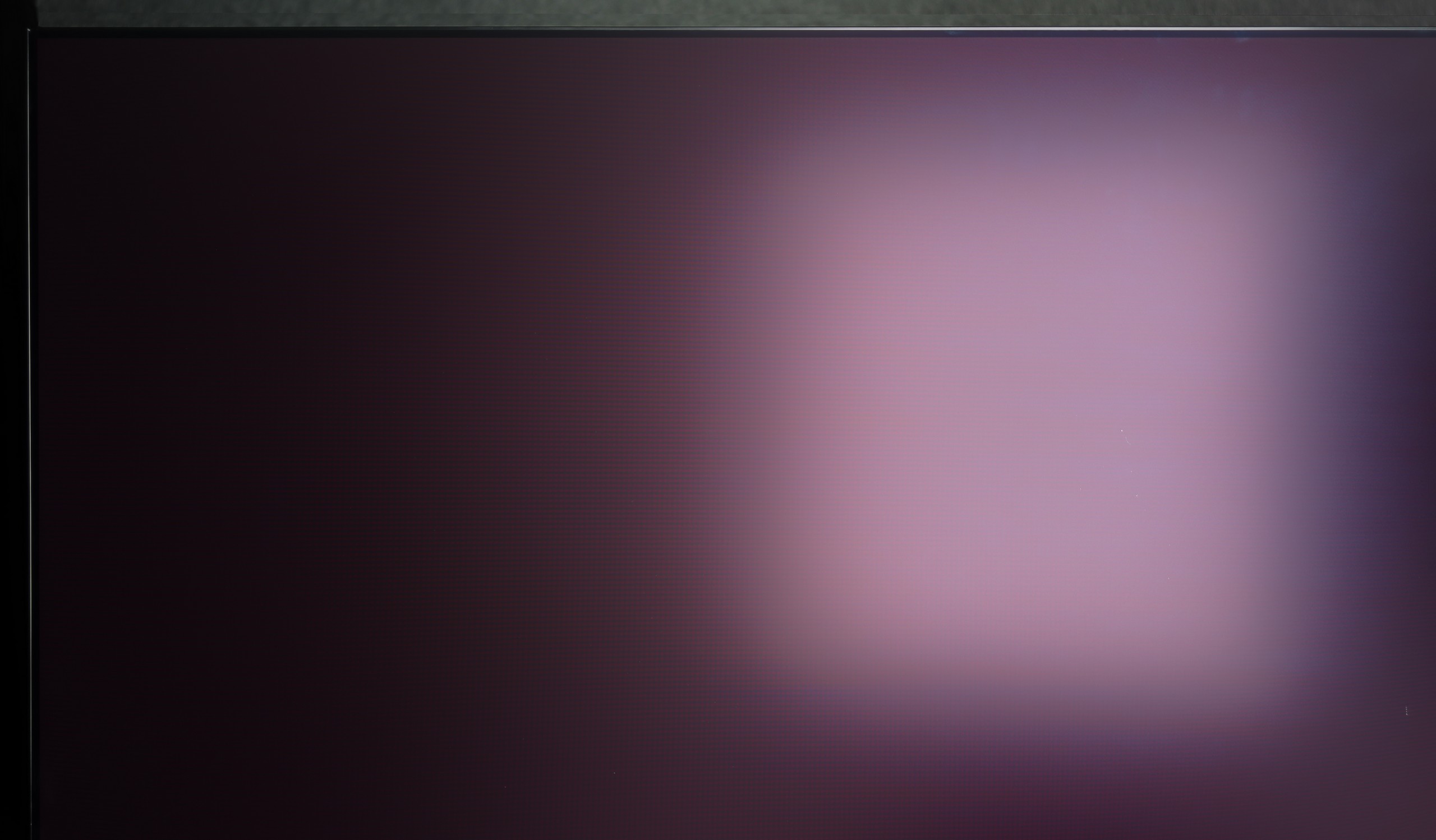


Panel brightness
Average luminance SDR
SAMSUNG OLED S95F (QD-OLED): 671 cd/m2
Sony A95L: 387 cd/m2
Sony A95L performs quite well in daylight conditions. The QD-OLED panel effectively suppresses reflections and glare, making viewing comfortable even in bright sunlight. An average brightness of 380 cd/m² is a really good result, especially for an OLED TV – it holds its own, although it still cannot compete with Mini LEDs, which are unbeatable in this regard. One of the issues that may bother some viewers is the characteristic QD-OLED effect, where black loses its depth and takes on a slight cherry tint in strong light.
One of the biggest distinguishing features of the Samsung S95F compared to the competition is the matte screen coating. This solution performs best on the market in suppressing reflections and glare—images remain clear even in a brightly lit living room. However, it's important to remember that the characteristics of the QD-OLED panel come with a certain compromise. Under intense light, blacks can brighten, taking on a shade of cherry black, which affects color saturation. On the other hand, the brightness of the panel, reaching around 700 nits in SDR mode, is fully sufficient for the TV to perform flawlessly in typical daylight conditions.
Panel details
Subpixel Structure:

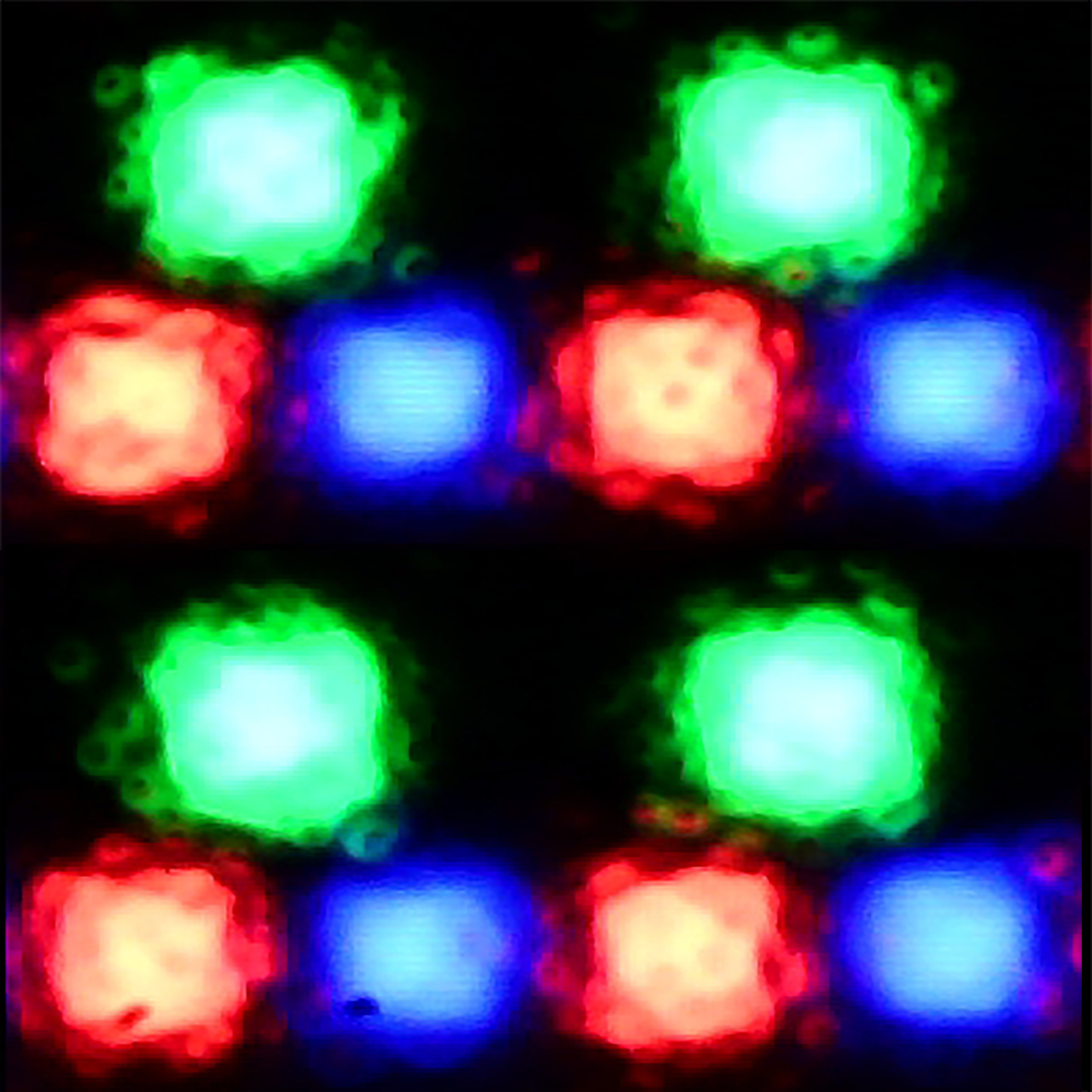
Panel uniformity and thermal imaging:


Sony A95L
SAMSUNG OLED S95F (QD-OLED)
TV features
8.8/10
7.9/10
- HDMI inputs2 x HDMI 2.0, 2 x HDMI 2.1 48Gbps0 x HDMI 2.0, 4 x HDMI 2.1 40Gbps
- OutputsToslink (Optical audio), eARC (HDMI), ARC (HDMI)Toslink (Optical audio), eARC (HDMI), ARC (HDMI)
- Network InterfacesWi-Fi 2.4GHz, Wi-Fi 5GHz, Ethernet (LAN) 100MbpsWi-Fi 2.4GHz, Wi-Fi 5GHz, Ethernet (LAN) 100Mbps
- TV receptionDVB-T, DVB-T2, DVB-S, DVB-S2, DVB-CDVB-T, DVB-T2, DVB-S, DVB-S2, DVB-C
Classic features:
- Recording to USB (terrestrial TV)
- Recording programming
- Picture in Picture (PiP)
- RF remote control (no need to aim at the screen)
- Backlit remote control
- Teletext
- Audio only mode
- Bluetooth headphones support
- Simultaneous Bluetooth headphones & TV audio
Smart features:
- AirPlay
- Screen mirroring (Windows Miracast)
- Voice search
- Voice search in native language
- Ability to connect a keyboard and mouse


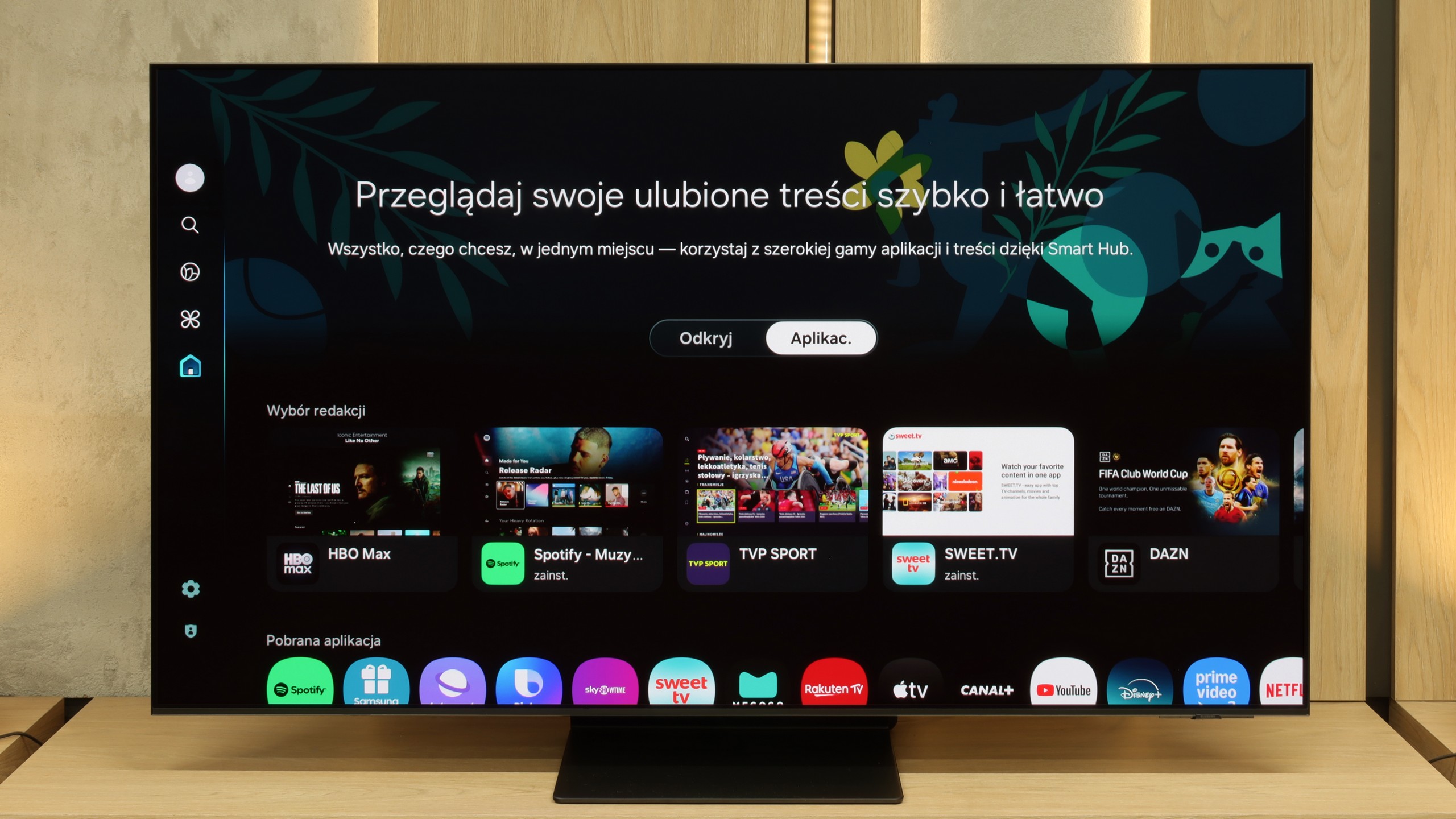
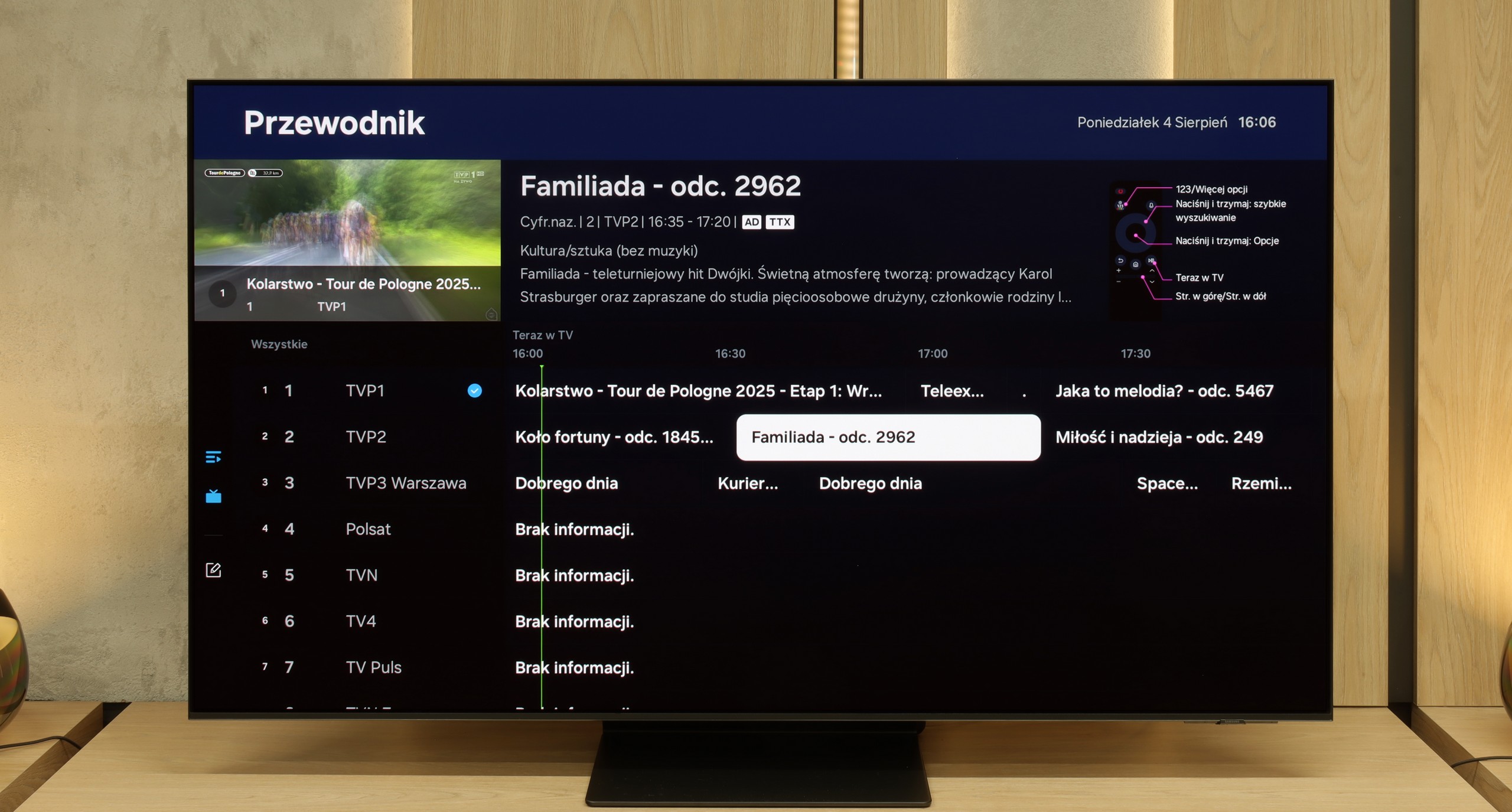
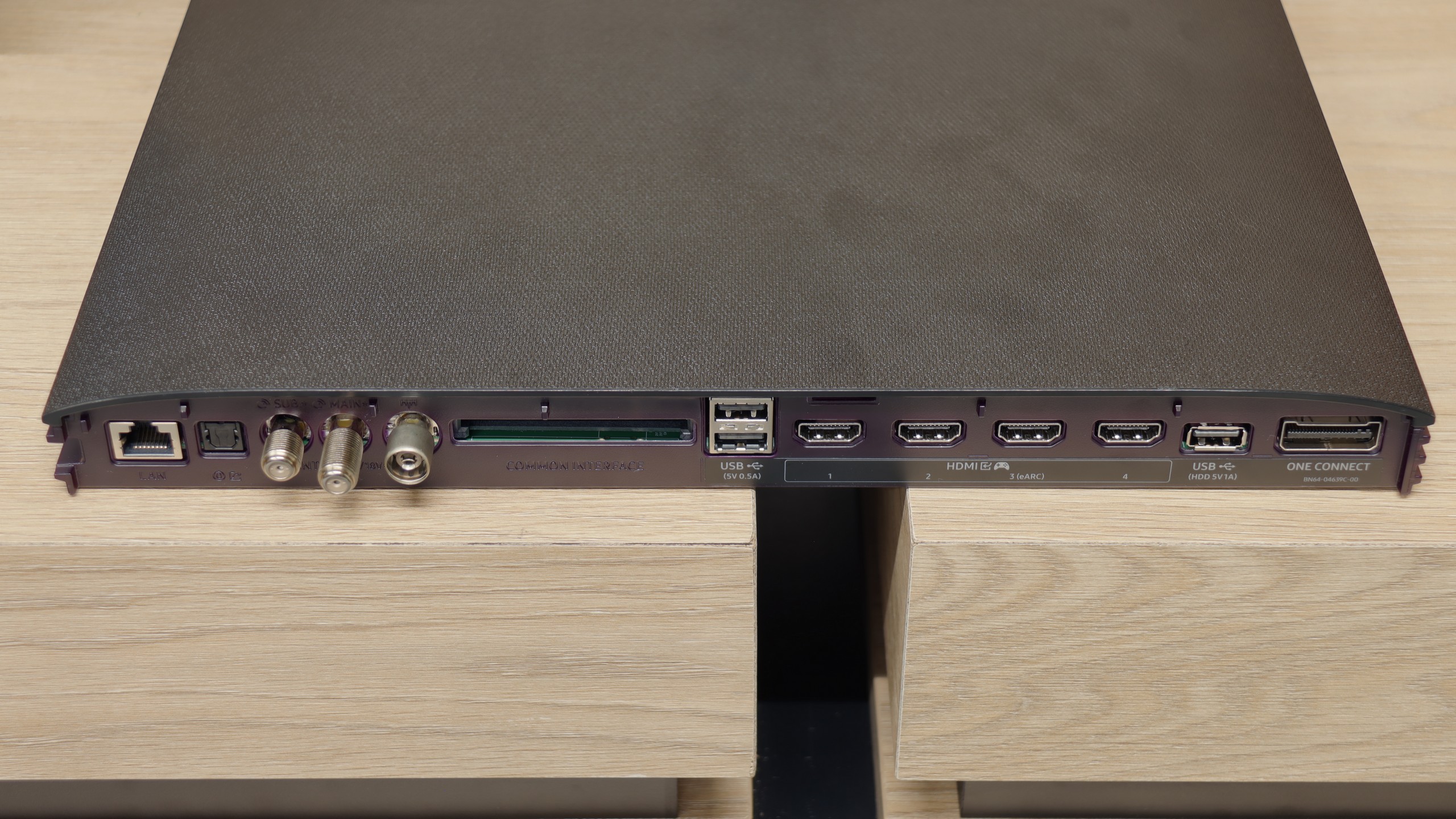
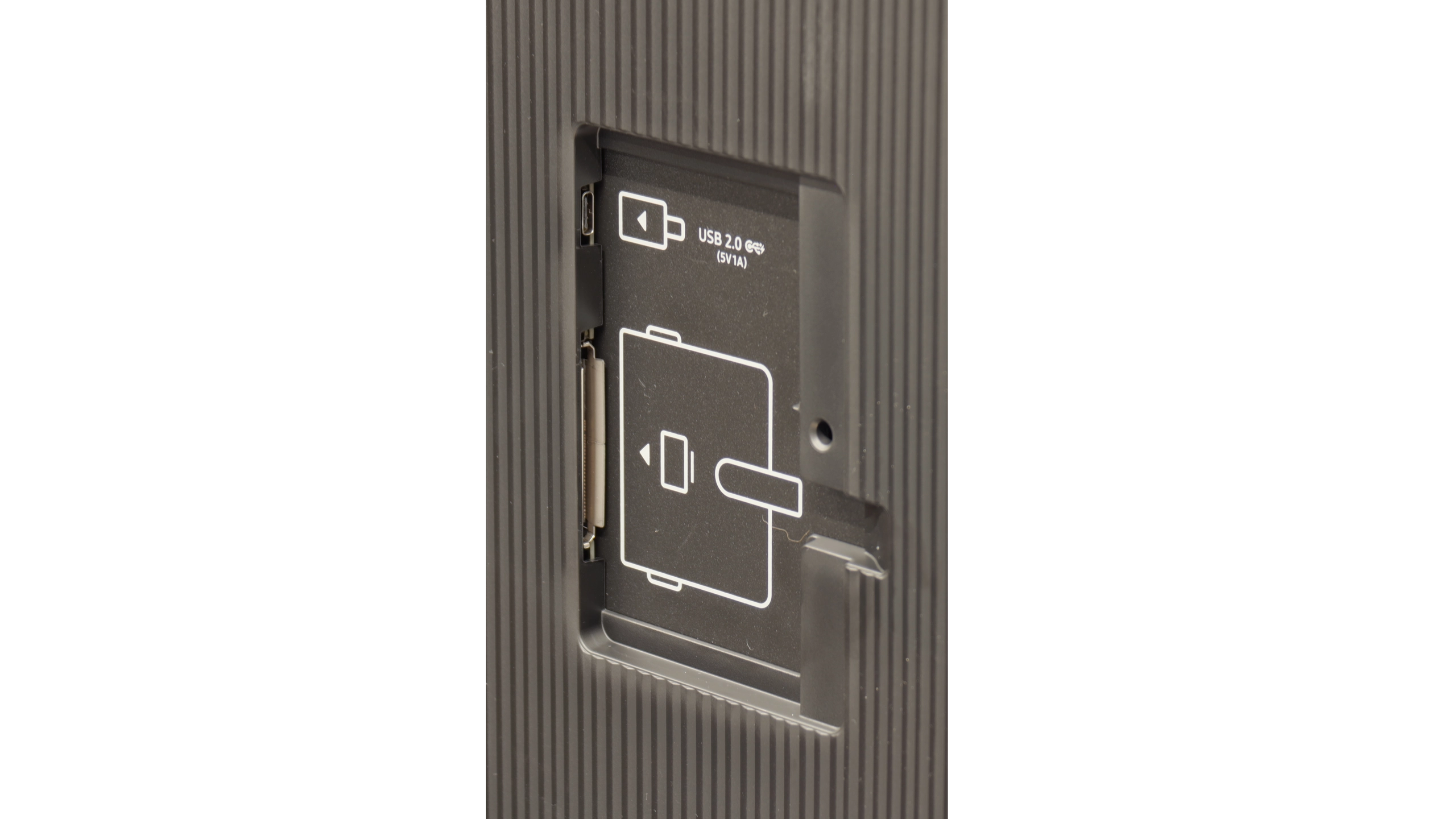
Sony A95L operates on the Google TV operating system, which means easy access to a wide range of applications, streaming services, and various personalization features. The interface is clear and easy to navigate, and the wealth of available applications ensures that everyone will find something for themselves – from popular streaming services like Netflix, Disney+, and HBO Max, to various music and sports apps. Google TV also supports a voice assistant, allowing you to easily search for content, control TV settings, and even manage other smart devices in the home – all with simple voice commands.
Sony A95L also offers a range of practical features that make it even more versatile. The TV has the ability to record programs directly to USB memory, providing a convenient solution if you can't watch something live. It also supports AirPlay, making it easy to stream content from Apple devices, and additionally, various peripherals such as headphones or game controllers can be connected via Bluetooth. The package includes two remotes – one traditional and a modern, backlit one, which is particularly useful during evening viewing when the room is dark. It is worth mentioning the lack of the PIP feature, which allows watching multiple TV signals simultaneously.
As for the appearance, A95L Sony may not be the thinnest OLED TV on the market, but it has its advantages. The package includes a practical stand that can be adjusted in various ways, allowing you to tailor the TV to your needs and space arrangement. Additionally, the manufacturer included the Bravia Cam, which opens up additional possibilities – from video calls to intelligent features, such as optimizing picture and sound based on the viewer's position. Although it is not the slimmest, its solid construction and useful accessories make the A95L look really good in any living room.
SmartTV in S95F: Tizen
Against the competition, the Samsung S95F not only shines with its picture but also shows that smart features can be truly well thought out. Tizen runs very fast, doesn't freeze, and gives the impression that everything is at your fingertips – from AirPlay to simple voice search that works even when the remote is lost somewhere. Yes, the system is not as open as Android, but frankly, few will feel its shortcomings – there are plenty of apps, and additional features like integration with SmartThings only enhance the sense of completeness.
Classic Features of S95F
Interestingly, Samsung reminds us that a television is still a television. Therefore, alongside modern gadgets, we also find classics – PiP, teletext, or the option to pair headphones via Bluetooth. There's no USB recording from DVB-T/T2 tuners, but instead, we get a remote that can also control the Canal+ decoder and other devices in the living room. And the cherry on top is the One Connect module – all the ports in a separate box, making connecting equipment no longer an extreme sport.
Playing files from USB
8.7/10
9/10
Supported photo formats:
Maximum photo resolution:

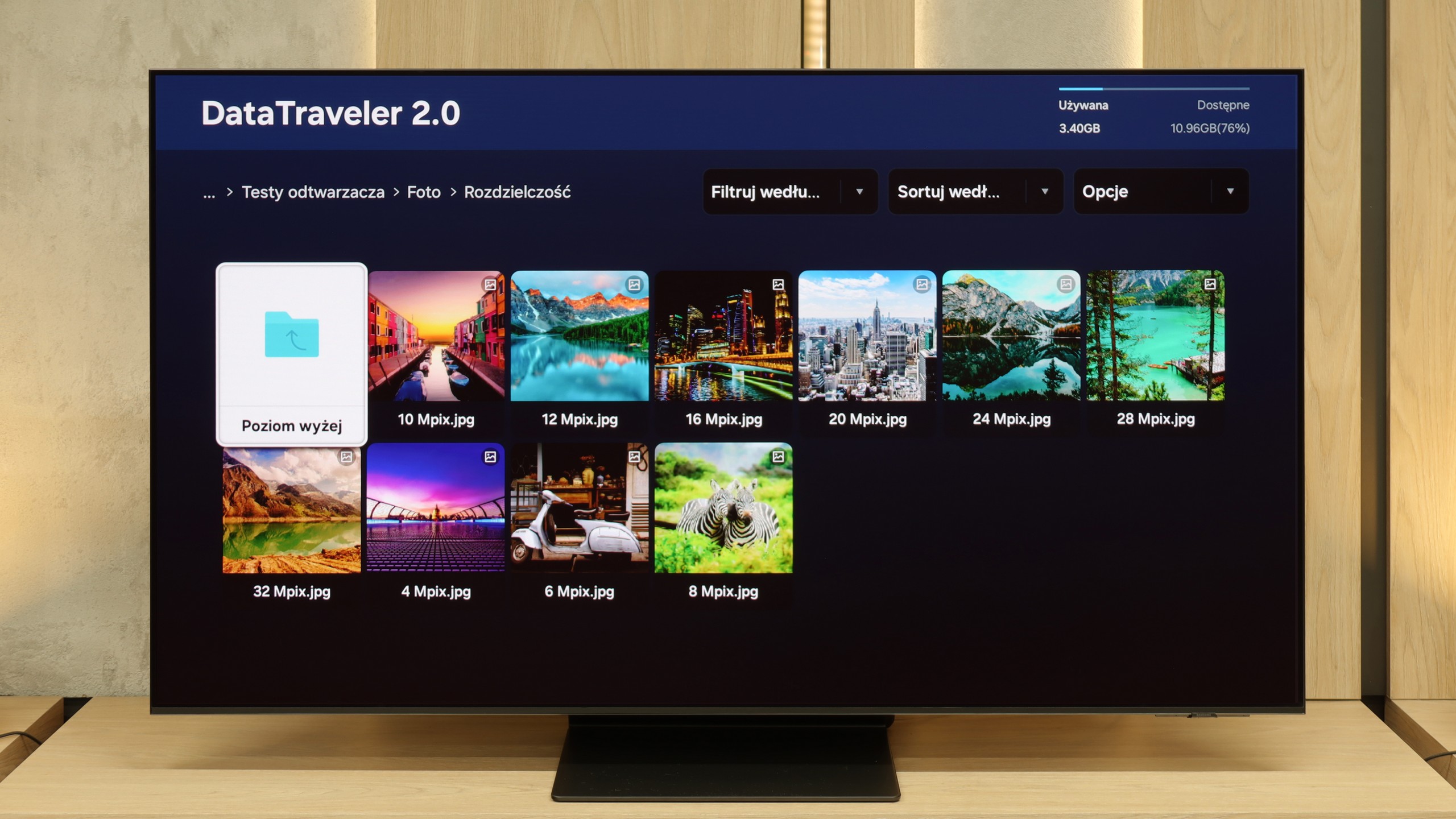
Sony A95L performs quite well when it comes to playing files from USB. The built-in media player will satisfy most users – it is easy to use and supports popular formats, allowing for easy playback of videos, photos, or music directly from the connected flash drive. The only thing missing is the ability to change the font color in subtitles, which can be problematic in some situations. Fortunately, the Google TV system allows for the installation of other media players that offer more advanced customization options, so you can easily adjust everything to your needs.
The built-in player in the S95F works well – movies and music start without any problems, so it's perfectly sufficient for everyday use. The issues begin when we expect full compatibility with what the manufacturer claims. Not all photo formats work, and HEIC files simply refused to cooperate. However, for most people, this won't be a barrier – for basic applications, such a player performs flawlessly.
Apps
9.6/10
8.7/10














































Sound
7.9/10
8/10
- Maximum volume-82dB
- Dolby Digital Plus 7.1
- Dolby True HD 7.1
- Dolby Atmos in Dolby Digital Plus (JOC)
- Dolby Atmos in Dolby True HD
- DTS:X in DTS-HD MA
- DTS-HD Master Audio
Sony A95L offers sound that definitely stands out among most televisions. Considering the built-in speakers, the audio is truly impressive – full, with well-balanced low and mid tones. The dialogues are clear, and the sound effects are well distributed, making the television great for both watching movies and gaming. The Acoustic Surface Audio+ system, which converts the screen's vibrations into sound, creates a more spatial impression, adding additional depth to the viewed material.
The built-in speakers of the S95F can pleasantly surprise – they sound nice and clear, and despite the sleek design of the television, it's hard to say that the sound is flat. Sure, there could be more bass, but that's a natural compromise with such a thin casing. For daily watching of movies or series, the setup works wonderfully. Those who enjoy stronger sensations should consider a soundbar – preferably one with Q-Symphony support. Then the television's speakers and the Samsung soundbar work together.
Acoustic Measurements
No acoustic data
82dBC (Max)
75dBC
